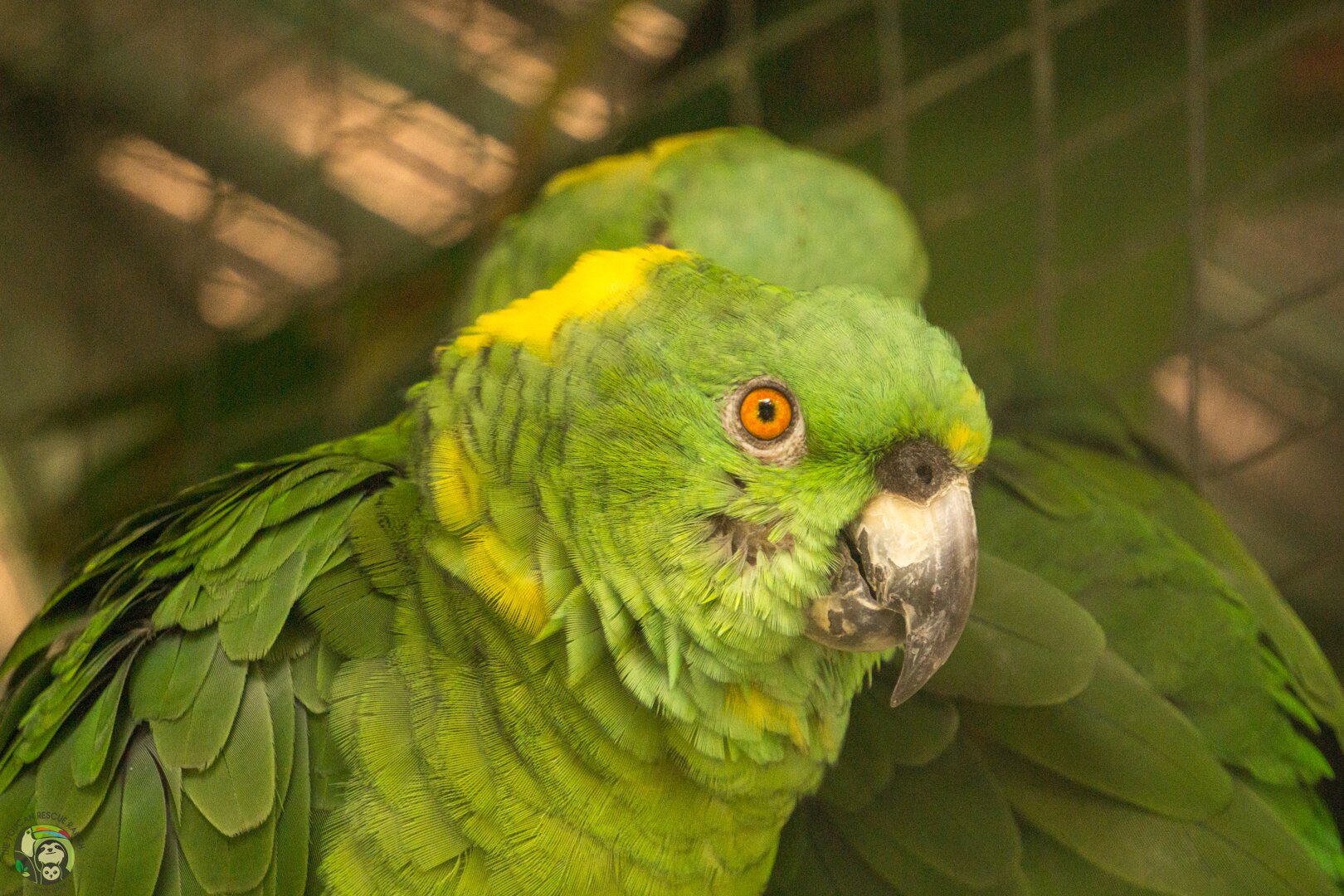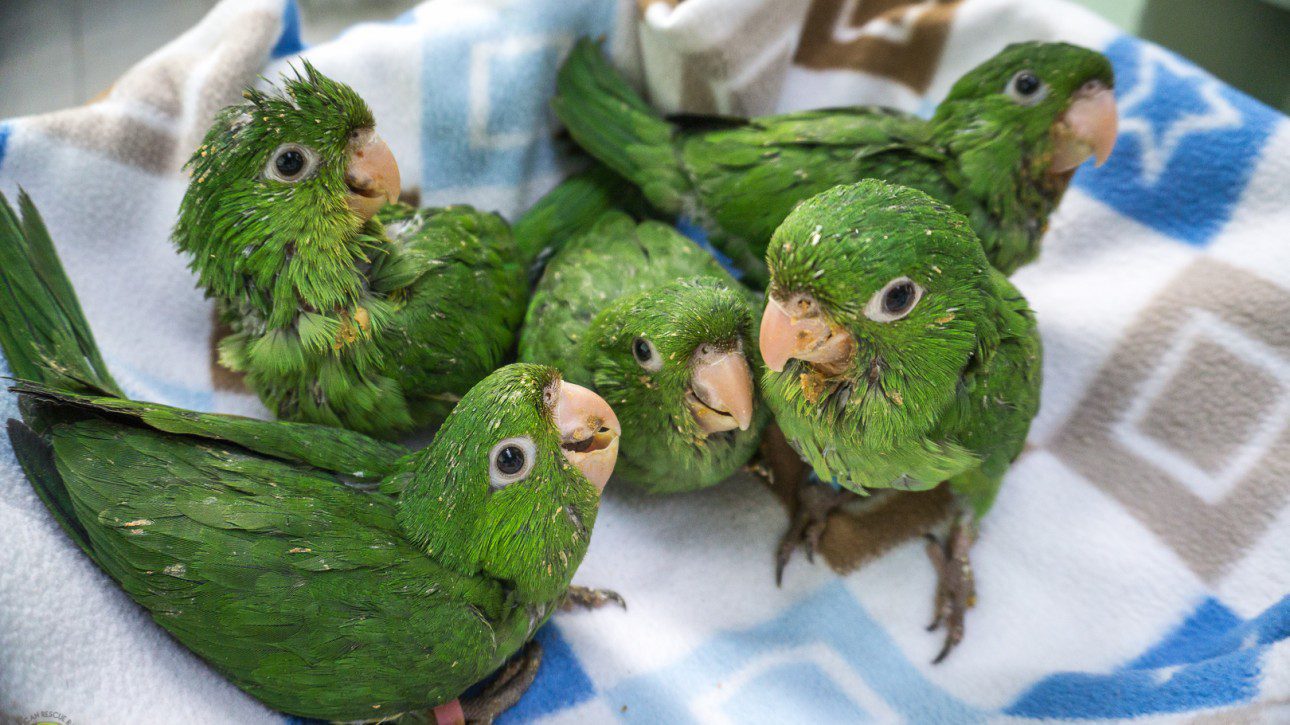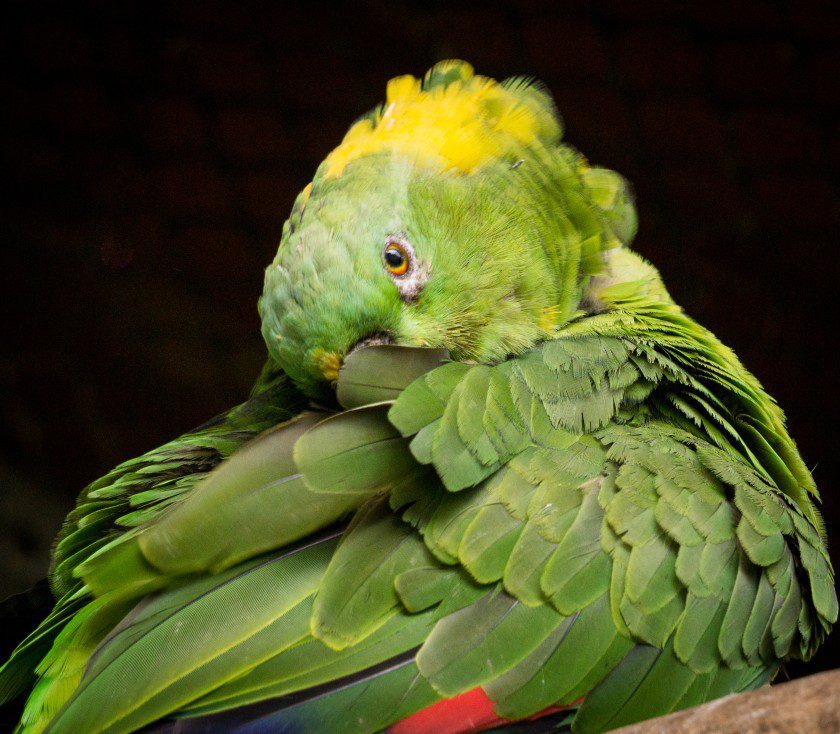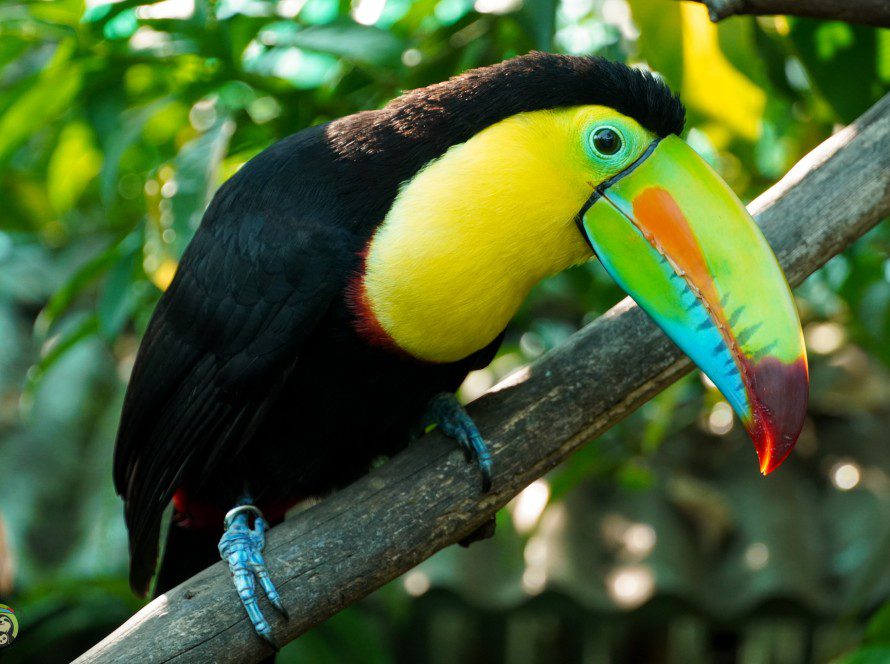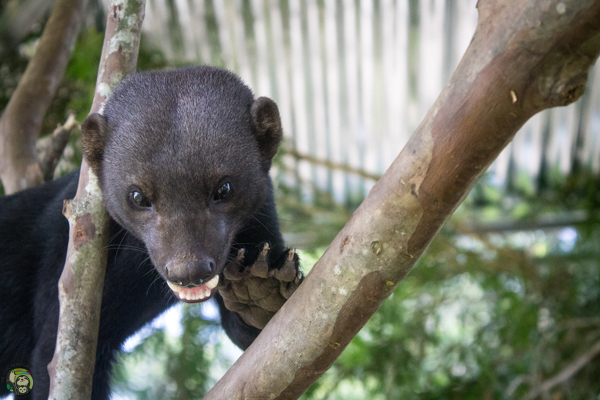Amazona auropalliata auropalliata, A. a. auropalliata
- CLASS: Aves
- ORDER: Psittaciformes
- FAMILY: Psittacidae
- GENUS: Amazona
- SPECIES: auropalliata
- SUBSPECIES: auropalliata
About
Parrots are some of the most amazing animals out there. Their incredible vocal abilities, their outstanding social skills and their wonderful, cheery disposition have earned them a place in the hearts and minds of people all around the world! Parrots come in all shapes and colors, but they have a few things in common. All parrots have a curved beak, zygodactyl feet and generally enjoy a diet of fruits, nuts, seeds, and insects. The most common parrot found in rescue centers throughout Costa Rica is the Yellow-Naped Parrot. Also known as the yellow-naped amazon, its species name auropalliata can be divided into its two etymological roots, “auro” which means gold, and “palliata” which means covered by a mantle, making this the parrot covered by a golden mantle, a perfect reference to its yellow nape.
The most striking feature found in most parrot species is of course their big, strong beaks! Their beaks are powerful enough to chew through wood and also to bite through hard clays to get at minerals, but their beaks are also quite sensitive allowing parrots to use their beaks to climb around their environment and even manipulate objects very dexterously. Their other defining feature is their zygodactylous feet. This unusual toe configuration means that parrots have an arrangement of toes in which two toes face forward and two toes face backward. This toe configuration allows parrots a lot of dexterity when manipulating objects but also while moving through the thick foliage of the higher canopy.
Yellow-naped amazons are part of the amazon genus which includes around 30 different species of closely related animals. Parrots in this genus are usually green, mid-sized, and have diets of fruits, nuts, and seeds.
The yellow-naped amazon’s defining feature of course is the yellow patch of feathers just above the beak and on the back part of the neck. Its beak is gray, turning a lighter shade towards the base of the mandible. They have rounded wings and a short, squared tail. When the wings are unfolded it’s possible to see that the peak of the primary feathers is blue while the four outermost secondary feathers are red in color. These parrots don’t present sexual dimorphism, but immature specimens don’t have the yellow nape and have gray irises, distinct from the yellow and red irises of the adults.
In Costa Rica, yellow-naped amazons are important because they’re the only mid-sized parrot on the Pacific side of the country. They’re also one of the most captured species for the wild animal trade. Yellow-naped parrots are recognized for their bright personalities, melodious voices, and willingness to imitate sounds, making them particularly attractive to poachers.
Yellow-naped parrots are vital to the health of the rainforest. Their dietary habits of eating fruits and nuts mean that their territories have to be quite large to fulfill their nutritional needs. Because of this they are powerful flyers and may travel long distances in search of food. This allows them to perform the critical role of seed dispersers helping to ensure the regeneration of several tree species as well as the growth of the forest beyond its existing reaches, helping it enlarge over time.
Yellow-naped amazons, like most other parrots, have a quite high muscle density for their size, making them ideal prey for hawks. It’s not uncommon to see them flocking behavior of parrots during the dry season to discourage individual predation. Barn owls, snakes, lizards, caracaras, jays, coatis, and capuchin monkeys have also been known to occasionally predate parrots such as the yellow-naped.
Habitat and Diet
Yellow-naped amazons are quite rarely spotted nowadays, but their range is all throughout the pacific coast, from southern Mexico to northern Costa Rica. They’re usually found in the canopy and borders of deciduous and gallery forests, as well as open grasslands with sparse tree coverage. They are less frequently found in secondary forests and cultivated land.
Yellow-naped parrots are extremely gregarious and diurnal, and they may eat a wide variety of fruits and nuts. They normally feed quietly in the higher parts of trees. In Costa Rica, they may feed on the fruits and seeds of the poro poro, raspaguacal, terminalia as well as fruits and buds.
The hooked bill of parrots is an extremely advantageous adaptation for their specific lifestyle. Because of their diet parrots have to deal with the diverse and at times very complex defensive mechanisms that evolution has devised for plants to protect their seeds. This includes such devices as capsules, spines, and even toxic or distasteful chemicals. Parrots are also quite dextrous with their feet, usually grabbing big fruit or seeds with one foot while standing on the other and munching down with their beak.
In TRR we provide our parrots with a wide variety of fruits and nuts, so they can pick and choose what they wish to eat. We also provide them with lots of enrichment and challenges to keep their minds sharp as they would be in the wild.
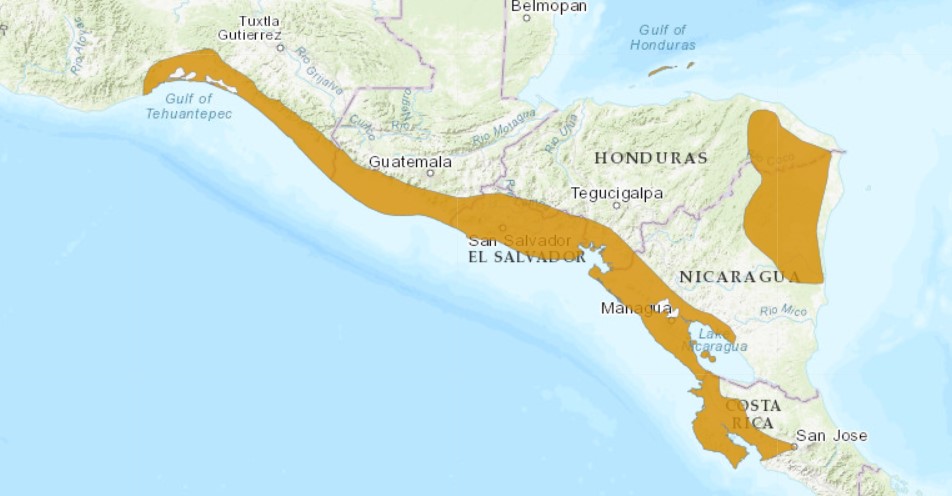
Behavior and Family Life
Parrots are extremely smart and interesting creatures. One of their most interesting traits is that just like humans, parrots also favor one of their “hands” over the other, with the majority of yellow-naped parrots being lefties!
Parrots are extremely gregarious keeping at the very least in groups of two as they forage through their territory. In the dry season flocks of up to 30 individuals can be found coexisting in the same tree to avoid predation.
Nighttime is one of the most critical times for parrot communal socialization. At this particular time, the most danger is found for diurnal cycle birds like Yellow-naped parrots. During the late afternoon, parrots start to congregate into their sleeping groups. Yellow-naped amazons are unusual among parrots because they have a specific sleeping tree they may use for generations.
A good time to hear parrots vocalize in the wild is between 17:30 and 18:30, as this is the time when yellow-naped parrots will arrive in their sleeping trees and begin their extensive vocalizations before going to sleep. While smaller parrots may scatter around the deep foliage during the night, yellow-naped amazons are bolder as they usually choose bare trees and don’t bother to find ample foliage cover for their sleeping time. Yellow-naped parrots are generally the first parrot species to wake up in the morning, and it’s not unusual to see mated pairs of parrots flying away from the sleeping tree as early as 5 am.
Regarding their daily routine, parrots are diurnal, waking up early and flying off in pairs, hitting a rapid succession of foraging sites. By midday, birds in the same area come together to spend some time during the hottest hours of the day. Here, they preen, play, and sleep for several hours. Play may include biting at each other, hanging upside down, chewing sticks and branches, and biting at each other’s feet. The midday heat brings some sleepy time for our parrot friends, and they split again during the early afternoon to forage again. Yellow-naped parrots also visit their nest during the day, performing conspicuous behavior and vocalizing during and outside the nesting season. Pairs will often engage in singing duets with neighboring pairs as well.
These rituals are not unheard of in TRR, with our parrots performing morning duets as they wake up and sing loudly in the late afternoon hours. A good moment to hear our superb parrots sing is after the afternoon tour!
Yellow-naped parrots nest in holes, relying on mostly natural cavities in trees or palms. Yellow-naped parrots are monogamous and usually choose their mate at around two years of age. They will remain with their mate for the rest of their lives. As in most parrot species, the females incubate the egg, while the male busies himself by providing food for his mate. Eggs are incubated as soon as the first egg is laid, because of this the babies usually hatch asynchronously, so chicks in the same nest may be at varying stages of development. Both parents feed the babies, and they make sure that even the smaller babies are served appropriately. Fledged youngsters may remain with their parents in small family groups or join other juveniles in small groups.
At the Toucan Rescue Ranch
At the Toucan Rescue Ranch, we receive several different species of parrots including 5 different species of Amazon parrots. Among the parrot species, we receive you can find some of the very charismatic Yellow-naped amazons. One of our permanent residents is called Jake. Jake is a very talkative young fellow, at about 16 years of age, he’s one of the oldest parrots we have. When Jake first arrived he was housed with our oldest parrot, a spry little Northern Mealy Amazon by the name of Lorita. They hit it off from the start and quickly rose in status to become the power couple at the ranch.
At 16 and 51 years of age respectively, Lorita and Jake spend their time being around each other, playing with one another, feeding each other, and of course, preening each other. If you wanna know more about our lovebirds (pun intended), the plights of parrots in the wild, and why they are the most common animal found in rescue centers please join us at the Toucan Rescue Ranch in one of our informative educational walks!
A Virtual Journey into Costa Rica’s Avian World Embark on a 30-minute adventure into the vibrant and diverse world of Costa Rica’s tropical birds with the Toucan Rescue Ranch. This…
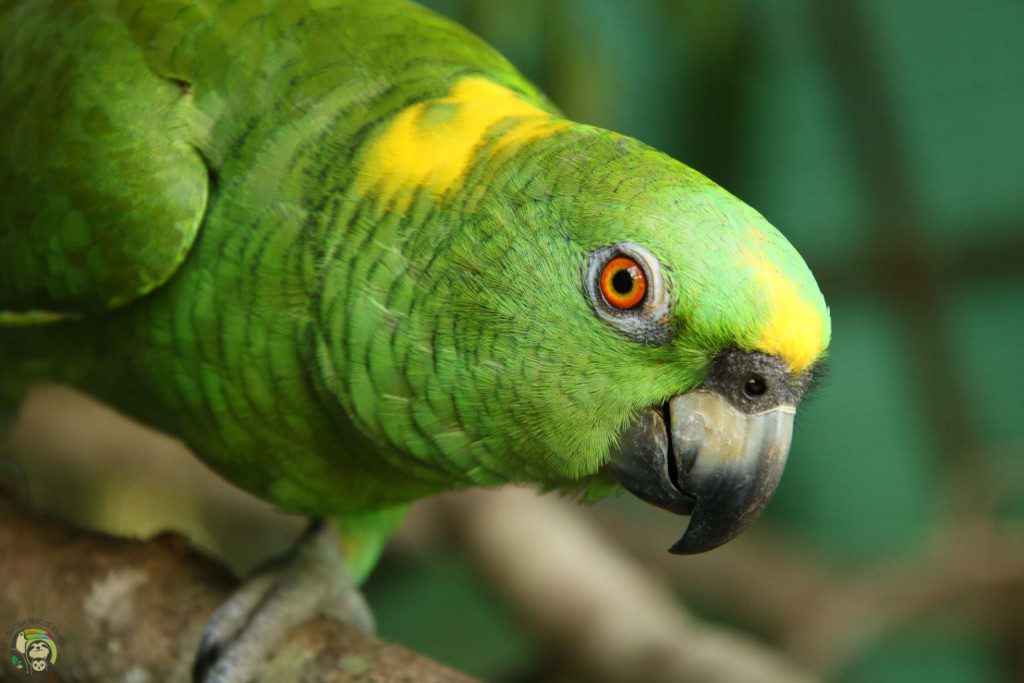
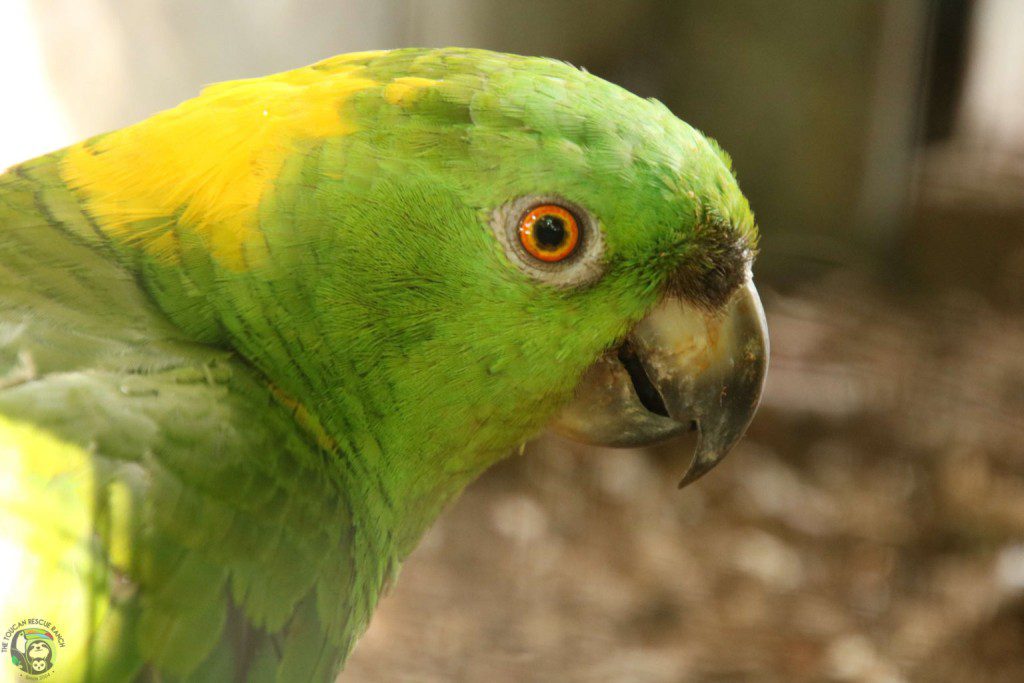
Conservation
Yellow-naped Parrots are rapidly decreasing in numbers in the wild due to several reasons. Deforestation and the incursion of human beings into wild spaces have aided in the steady decline of the species, but the main reason for their disappearance is usually due to poaching. Yellow-naped parrots are highly sought after in the pet trade for several reasons. In captivity parrots of this species are known for their long lifespans, exceeding 80 years on occasion, making them long-term companions. They are also normally very curious, playful, and intelligent, able to mimic human speech with a melodious cadence, providing an entertainment factor for those who may wish to have them as pets. Yellow-naped parrots are also not prone to biting, making them, in the eyes of some, even more, ideal pets.
It is for these reasons that they are usually pursued and captured to be kept as illegal pets. In Costa Rica, it is exceedingly common for people to keep parrots and parakeets in their homes which is regularly very damaging for the birds involved. These birds are protected by CITES as well as local laws in Costa Rica, making commercialization and poaching a criminal offense. Nevertheless, people still capture or keep parrots illegally in high numbers, making them the most common animal rescued from poaching situations in the country, and as such a common guest in Rescue Centers all over Costa Rica.
This species of parrot has been so targeted by pet hunters that it is thought that, even in places with high concentrations of animals, their numbers have been halved in the last decade. This has contributed to the steady escalation of the yellow-naped amazon´s ranking in the Red list, having moved from Least concern in 2004 to Endangered in 2017.

Life Span
Medium life expectancy is 20 – 30 years
Young
- Incubation period: 26 days
- Number of young at birth: 3
- Age of maturity: 4 months to 1 year
Size
- Length: 14 inches (35 centimeters)
- Weight: 1 pound (450 grams)


